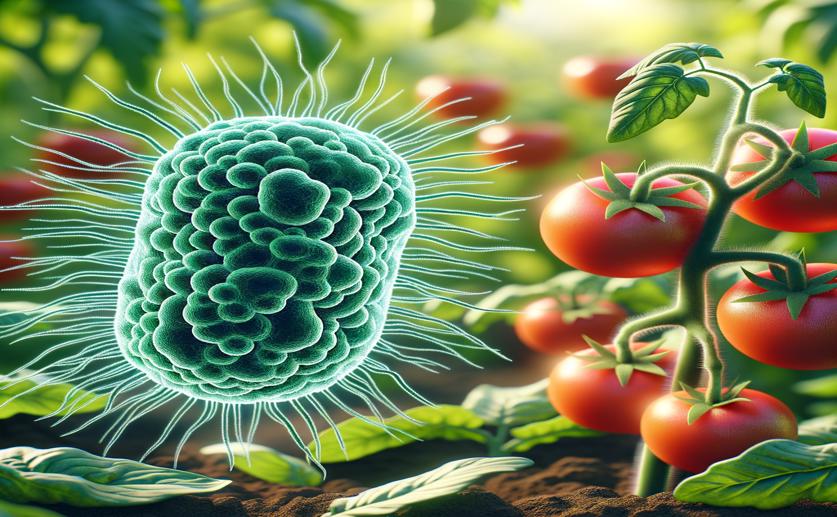
New Discovery of a Beneficial Bacteria That Protects Tomatoes from Wilt Disease
Greg Howard
23rd May, 2024

Image Source: Natural Science News, 2024
Key Findings
- Researchers from Northeast Agricultural University discovered a beneficial bacteria strain, NEAU-CP5, from tomato seeds
- NEAU-CP5, identified as Bacillus velezensis, produces antibacterial substances that fight the harmful Ralstonia solanacearum
- Applying NEAU-CP5 to tomato plants reduced bacterial wilt by over 68% and boosted the plants' natural defenses
AgricultureBiochemPlant Science
References
Main Study
1) Isolation and identification of NEAU-CP5: a seed-endophytic strain of B. velezensis that controls tomato bacterial wilt.
Published 20th May, 2024
https://doi.org/10.1016/j.micpath.2024.106707
Related Studies
2) Ralstonia solanacearum, a widespread bacterial plant pathogen in the post-genomic era.
3) Recent trends in control methods for bacterial wilt diseases caused by Ralstonia solanacearum.
4) Bacterial Wilt in China: History, Current Status, and Future Perspectives.



 22nd May, 2024 | Jenn Hoskins
22nd May, 2024 | Jenn Hoskins